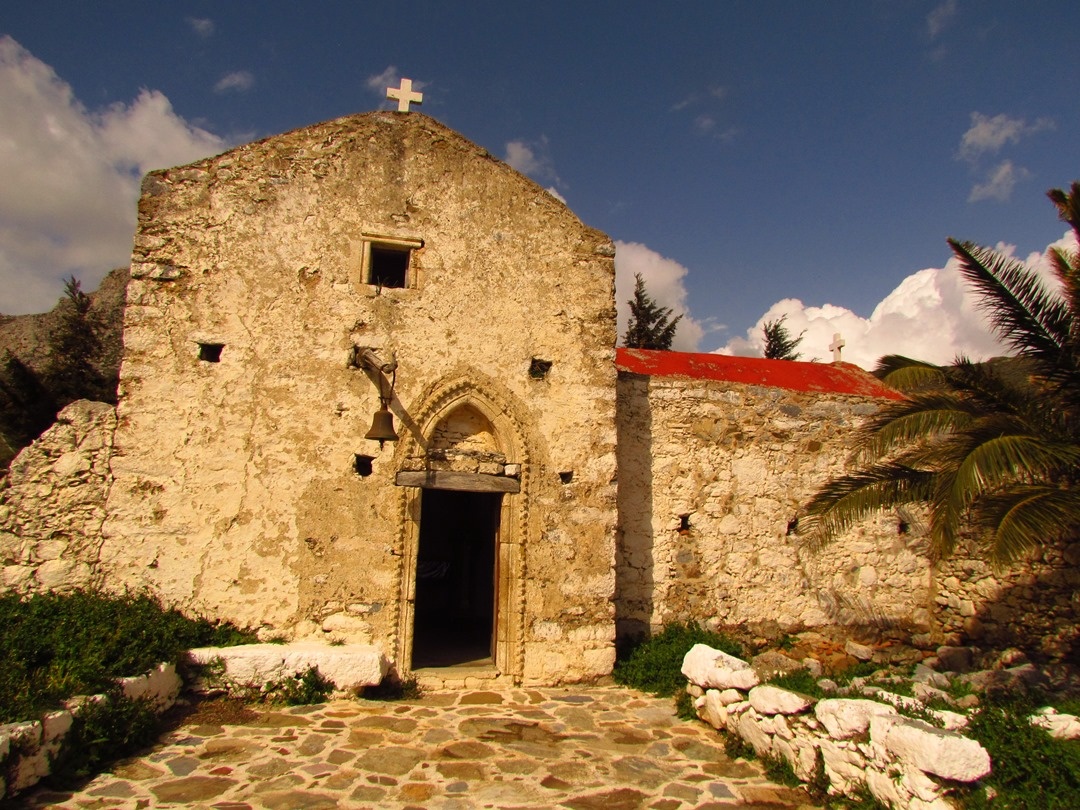
The Agios Pavlos Monastery [St. Paul] dates back to the Venetian rule period. It used to operate as a hermitage site until about the mid-20th century. This location was not chosen in random; it is on the road from Paranymfoi to Koudoumas Monastery, above the imposing cliffs and rocky caves of the Asterousia, which is ideal for hermits.
The Monastery flourished when scholar Iosif Filagris ran the neighbouring Treion Ierarchon Monastery, at Lousoudi ton Kapetanianon. Agios Pavlos Monastery operated throughout the Venetian era. During the Ottoman rule, it was stripped of its belongings and when, during the 19th century, attempts were made to re-establish it, the residents of Paranymfoi and Platanas eagerly offered their money. The rapid growth of Koudoumas Monastery had a negative impact on the Monastery, which was gradually abandoned.
Right below the chapel, which is built on a natural balcony, starts a precipitous ravine and the cliffs of the south Asterousia, one of the most imposing locations on Crete. This area is ideal for settlement, and had likely attracted numerous residents during antiquity, judging by the archaeological findings interspersed in the entire area.
Architecturally, this Monastery is a single-nave basilica with a narthex, while the pointed door-frame is carved in limestone, a typical practice in the Venetian era. In the church interior, parts of the beautiful original murals that used to adorn it are still visible and have been roughly repaired. In the Monastery yard there are ruins of monk cells, annexed to the church, as well as a few graves.



